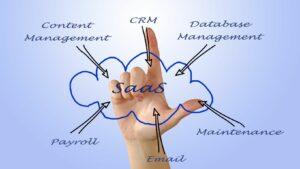Table of Contents
ToggleIn the fast-paced world of Software as a Service (SaaS), content strategy is the backbone of successful marketing efforts. As SaaS companies strive to stand out in a crowded digital landscape, a well-crafted content strategy becomes essential for attracting and retaining customers. By understanding their audience’s unique needs and pain points, SaaS businesses can create targeted content that not only informs but also engages and converts.
SaaS Content Strategy

A SaaS content strategy focuses on crafting specific, targeted content that aligns with the unique needs of potential customers. SaaS companies benefit from understanding their audience through segmentation and personas, which guide content creation effectively. This attention to audience ensures content resonates, enhancing engagement and conversion rates.
Content for SaaS often includes educational resources. Examples are tutorials, product guides, and webinars, designed to demonstrate the software’s value. These resources support users at different buyer’s journey stages, addressing pain points and influencing purchasing decisions.
Data-driven analysis empowers SaaS businesses. By tracking performance metrics like click-through rates and engagement levels, they refine their content strategy to maximize impact. This strategic approach builds brand authority and fosters trust among potential clients.
Leveraging SEO tactics fortifies a SaaS content strategy. Optimizing keywords within blog posts and articles can drive organic traffic. This strategy positions a company as an industry leader, attracting a broader audience and cultivating growth.
Key Components of a Successful SaaS Content Strategy

Targeted Audience Research
Understanding the target audience is essential for a SaaS content strategy. Companies must collect data on user preferences, pain points, and behaviors to craft personalized content that resonates with their audience. This ensures engagement and aligns content with customer needs.Diverse Content Formats
Utilizing varied formats, such as videos, blog posts, and webinars, enriches a SaaS content strategy by appealing to different learning styles, increasing engagement, and enhancing retention. Different formats help cater to diverse audience preferences and consumption habits.SEO Optimization
Strategically incorporating SEO practices within a SaaS content strategy boosts visibility. Using relevant keywords, optimizing meta descriptions, and ensuring mobile-friendliness are critical. This approach drives more organic traffic and positions the company as an industry authority.Performance Analysis
Regularly analyzing content performance is vital for a successful SaaS content strategy. Monitoring metrics like engagement rates and conversion rates allows companies to identify successful elements and make data-driven adjustments for improvement. This continuous refinement optimizes overall strategy effectiveness.Developing a Sustainable Content Plan

Creating a sustainable content plan is essential for SaaS companies aiming for long-term growth. A robust plan maximizes the potential of their content strategy while maintaining consistency and quality. It starts with setting clear goals aligned with business objectives, such as increasing lead generation or enhancing customer retention.
To ensure relevancy, they should conduct thorough research to understand industry trends and audience preferences. Leveraging analytics tools helps identify which content types and formats resonate with their target audience. Continual assessment of this data informs the choice of articles, webinars, and product guides.
A diverse content calendar is crucial, promoting various formats and ensuring steady content flow. Regular updates help maintain engagement and adapt to changing customer needs. Aligning content with the buyer’s journey enhances user experiences and demonstrates the SaaS platform’s value proposition effectively.
Automation tools streamline content distribution, maximizing reach and efficiency. They optimize the SaaS content strategy by fostering sustainable practices and leveraging dynamic insights.
Challenges in SaaS Content Strategy
Crafting an effective SaaS content strategy isn’t without its challenges. Companies often struggle with maintaining content relevancy in a rapidly evolving industry. Adapting to new market trends while addressing diverse audience needs requires continuous research and flexibility. Balancing quality with quantity can also pose a challenge as businesses aim to produce valuable content without overwhelming resources. Additionally, ensuring consistent engagement across various platforms demands a strategic approach to content distribution and promotion. By acknowledging these challenges and implementing proactive solutions, SaaS companies can refine their strategies and achieve sustainable growth in a competitive landscape.



